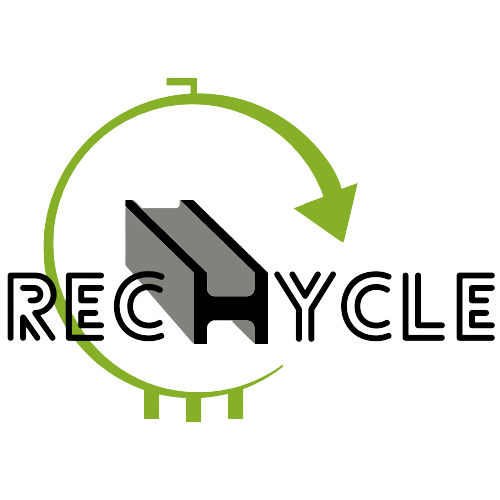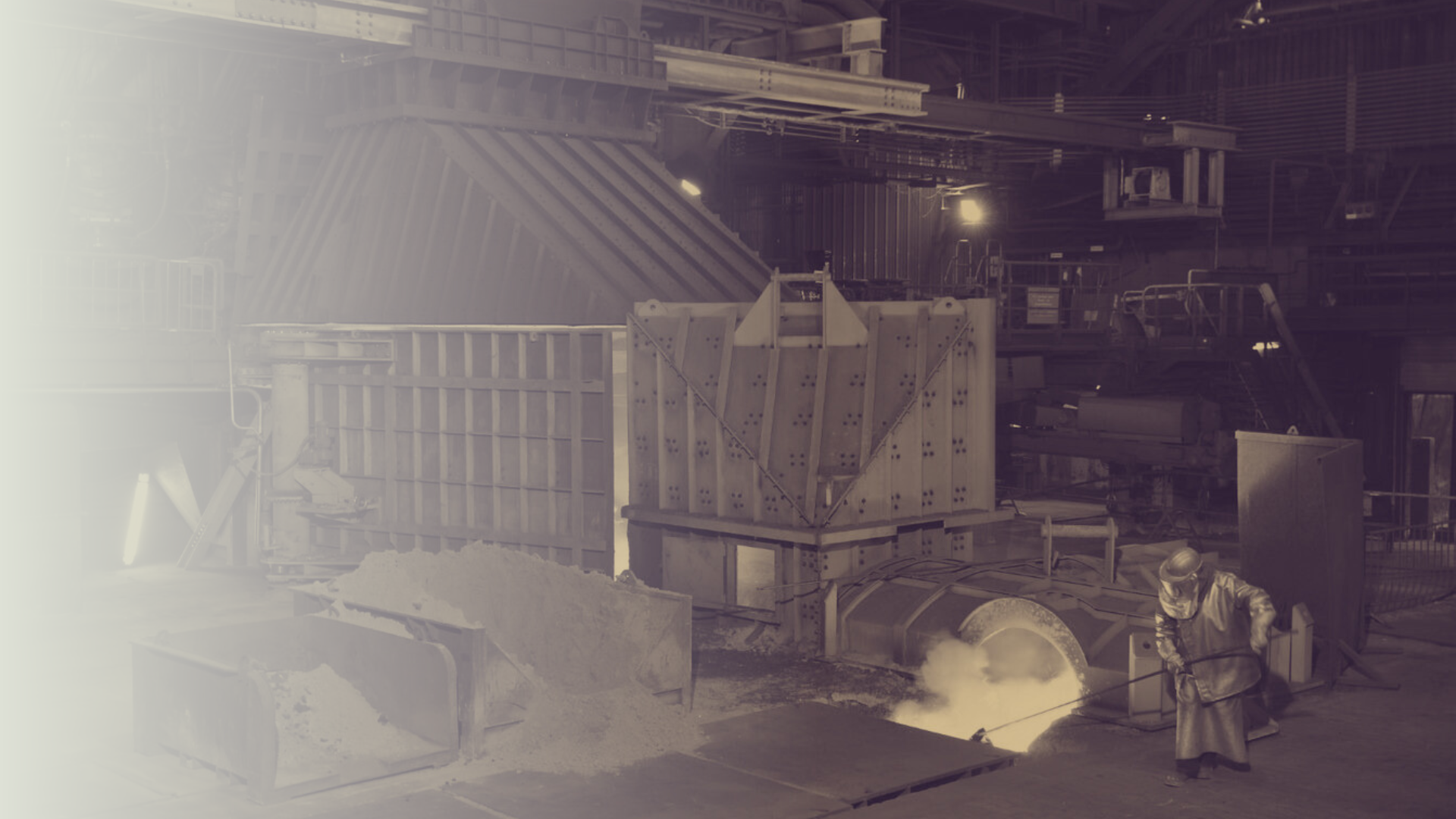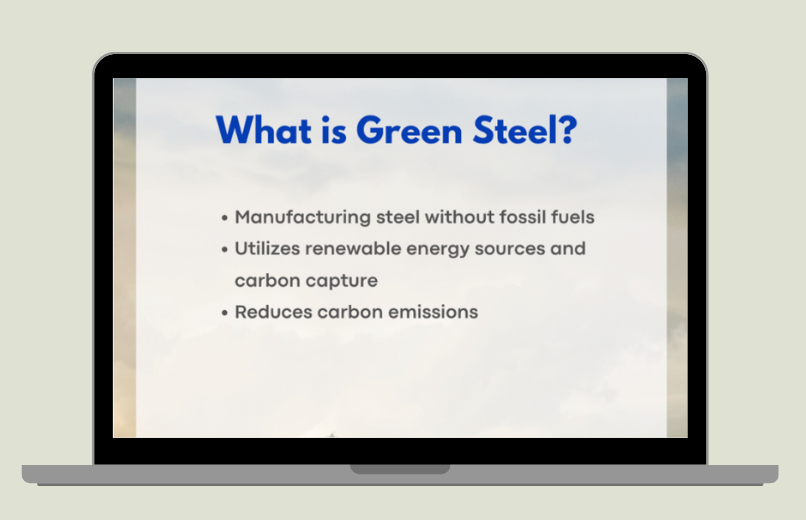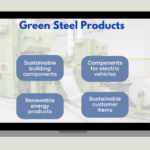Different from traditionally made steel, the production of green steel does not rely on fossil fuels. Therefore, it offers a promising solution to reduce the carbon footprint of the steel industry.
Green Steel Production
While steel is traditionally made using coke as a primary source to heat iron ore pellets and melt the iron for later stages, green steel makes use of green hydrogen and renewable energy. Electrolysis, the process of decomposing water into hydrogen and oxygen using electricity, is key for the green steel production process. When hydrogen reacts with iron ore, only water vapour is released.
Not all hydrogen is equally created. On the one hand, there is grey and blue hydrogen, which are produced from natural gas, which is a gaseous mixture of hydrocarbons predominantly composed of methane (CH4)—the second most important greenhouse gas contributor to climate change after carbon dioxide. Blue hydrogen, however, offsets the carbon generated from steam by capturing and storing it through industrial carbon capture and storage (CSS). On the other hand, green hydrogen is produced by using clean energy from renewable sources such as solar or wind power. Currently, green hydrogen makes up about 0,1% of overall carbon production, and this is a major pitfall to achieving widespread adoption of green steel.
What is to come?
Stay tuned for future blog posts on green hydrogen and other interesting topics.
List of abbreviations: CO2: Carbon dioxide; CH4: Methane; CSS: Carbon Capture and Storage







